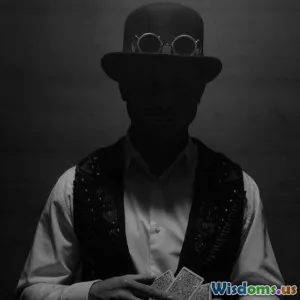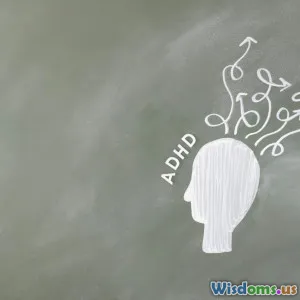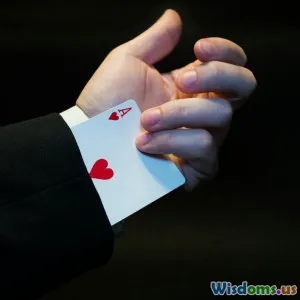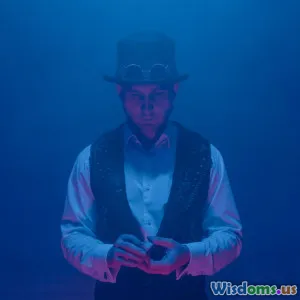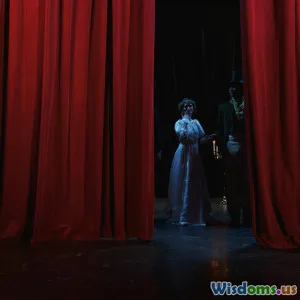
Behind the Curtain: Magic Revealed
7 min read Explore the secrets behind stage magic and illusions that captivate audiences worldwide. (0 Reviews)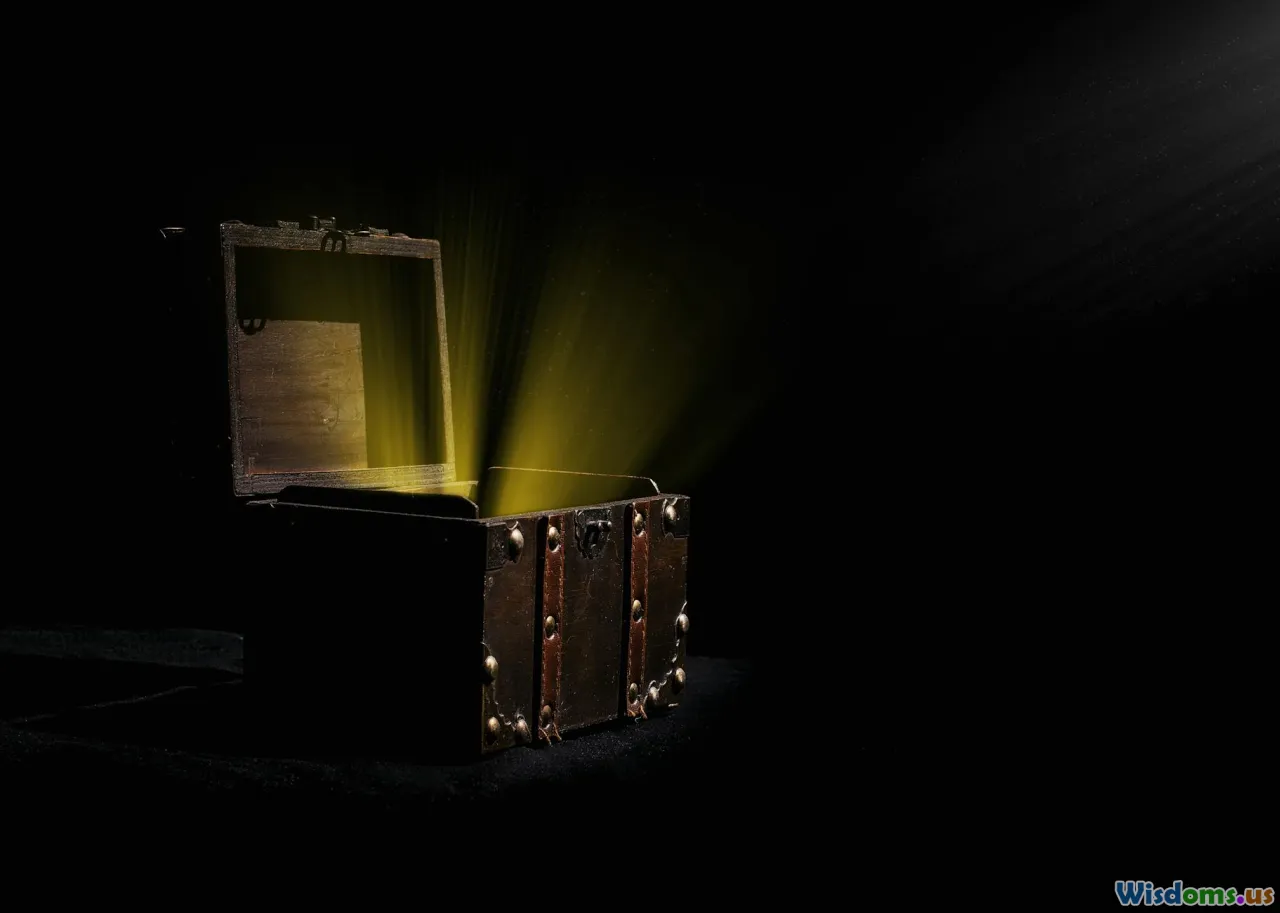
Behind the Curtain: Magic Revealed
Magic has enchanted and mystified humanity for centuries, captivating audiences with feats that seem to defy reality. But what lies behind the dazzling illusions and mesmerizing tricks performed on stage? This article pulls back the curtain, exploring the fascinating mechanics, psychology, and artistry behind magic and stage mysteries.
The Allure of Magic: Why We’re Captivated
Magic taps into a fundamental human desire—to believe in the impossible. It's a blend of storytelling, unexplained phenomena, and awe-inspiring skill. Psychologist Dr. Gustav Kuhn points out that magic exploits cognitive blind spots in human perception, using misdirection and attention control to compel the spectator to perceive an impossible event.
Consider the famous “Disappearing Elephant” illusion by Harry Houdini, a marvel of stagecraft that left audiences breathless. These illusions mirror deep-rooted archetypes of wonder found across cultures and times.
Historical Roots: From Ancient Rituals to Modern Stage
Magic’s origins are entwined with spirituality and religion. Ancient Egyptian priests, Roman illusionists, and medieval conjurers all practiced forms of sleight of hand and illusion, often cloaked in mysticism.
The 19th and early 20th centuries marked the formal rise of stage magic, popularized by figures such as Jean Eugène Robert-Houdin, considered the father of modern magic. He transformed magic into a theatrical art with elegant apparatus and refined presentations. His influence persists today, shaping not only the tricks but the grand showmanship and narrative climaxes.
Anatomy of a Magic Trick: Techniques and Tools
Understanding magic means exploring its core techniques, each designed to manipulate perception:
-
Sleight of Hand: The meticulous, practiced dexterity hands use to secretly manipulate objects. Classic examples include coins vanishing or card manipulations.
-
Misdirection: Psychological ingenuity redirects the audience’s attention. David Copperfield often employs this by engaging storytelling that distracts from the mechanics.
-
Mechanical Devices: Hidden compartments, trapdoors, mirrors, and gimmicked props are staples that create illusions impossible by mere hand skill.
-
Psychological Forcing: This subtle art convinces spectators they made free choices, when in fact options are controlled, commonly seen in mind-reading acts.
For instance, the popular "Sawing a Woman in Half" trick combines a cleverly constructed box, precise stage angles, and coordinated movements to create the illusion of a dangerous operation.
Spotlight on Legendary Illusions
The Bullet Catch
One of the most dangerous illusions, involving apparently catching a fired bullet. While the actual methods vary, many versions rely on specially prepared bullets, secret compartments, or sleight of hand.
Levitation Acts
Magicians like Harry Blackstone and lately David Blaine have captivated audiences with levitation. Often, hidden wires, meticulous stage lighting, and optical illusions come into play.
Escapology
Houdini elevated this to true spectacle. His escapes from water tanks, straitjackets, and locked trunks required physical endurance, lock-picking expertise, and ingenious props.
The Psychology Behind the Wonder
In 2013, magician and researcher Dr. Richard Wiseman revealed through experiments that what makes magic enthralling is often the interplay of surprise and cognitive dissonance. The mind struggles to reconcile what it expects with what it sees, producing wonder.
Moreover, magicians often use social cues and audience psychology to heighten the experience. Eye contact, timing, and even humor create emotional rapport and enhance the impact.
Ethics and Mystery: To Reveal or Not to Reveal?
Magic has always balanced secrecy and public spectacle. Revealing tricks can spoil the wonder, but some argue that understanding the craft increases appreciation.
Magician Jean-Eugène Robert-Houdin advocated for education about magic's art rather than exposing secrets indiscriminately. Today, forums and books like "Mark Wilson's Complete Course in Magic" provide controlled exposure.
However, unmasking illusions in inappropriate contexts, especially by live leak videos or unauthorized reveals, is widely discouraged within the magic community.
Modern Magic: Innovation in an Age of Technology
Contemporary magicians like Derren Brown and Hans Klok innovate by blending psychological illusions with technology such as augmented reality and digital effects.
The rise of social media has expanded magic’s reach while simultaneously challenging performers to protect their secrets and maintain awe in an instant information age.
Conclusion: The Eternal Charm of Magic
Magic endures because it embodies creativity, mystery, and the challenge to our understanding of reality. Behind the curtain exist layers of craftsmanship, history, and psychology ingeniously woven to produce unforgettable experiences.
By appreciating both the spectacle and the skill, audiences gain deeper respect for the artistry—acknowledging that while the secrets may be revealed, the wonder itself is everlasting.
References
- Kuhn, Gustav, and Emmanuel B. Moss. "Experiencing Impossible Events: Psychological Perspectives on Magic." 2018.
- Wiseman, Richard. "Magic in Theory: An Introduction to the Theoretical and Psychological Elements of Conjuring." 2015.
- Randi, James. "Conjuring." 1992.
- "Mark Wilson's Complete Course in Magic," Dover Publications, 2005.
Unlock the secrets of illusion and unlock your own sense of wonder.
Rate the Post
User Reviews
Popular Posts










